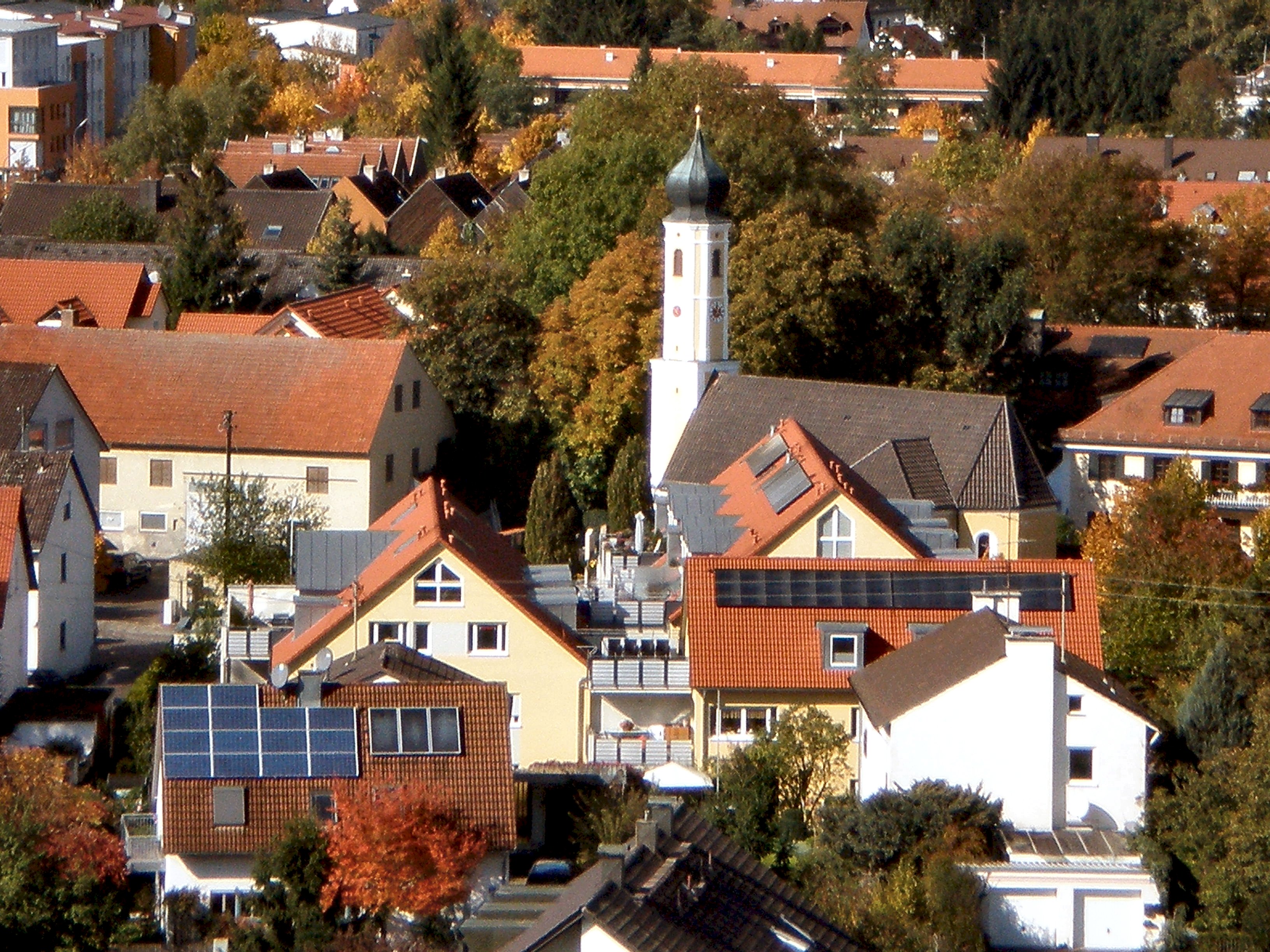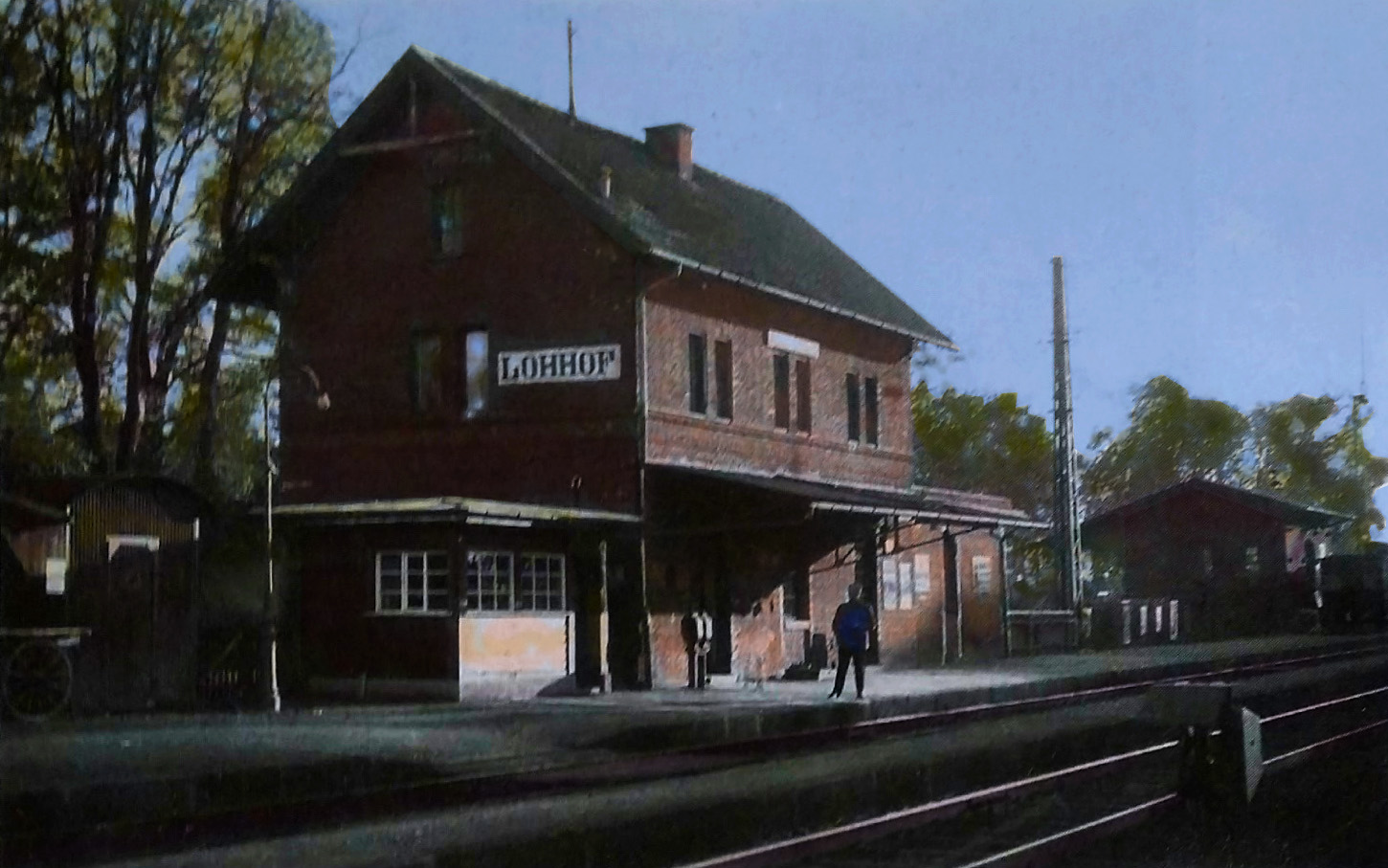Unterschleißheim on:
[Wikipedia]
[Google]
[Amazon]
Unterschleißheim (, , in contrast to " Upper Schleißheim"; ) is a
 The community suffered heavy losses during the
The community suffered heavy losses during the  During the late 19th century, the area between Unterschleissheim and Dachau was considered a 'Painter's Paradise' for nature artists.
Painters and illustrators such as
During the late 19th century, the area between Unterschleissheim and Dachau was considered a 'Painter's Paradise' for nature artists.
Painters and illustrators such as
Official Imageclip about Unterschleißheim
{{DEFAULTSORT:Unterschleissheim Munich (district)
town
A town is a type of a human settlement, generally larger than a village but smaller than a city.
The criteria for distinguishing a town vary globally, often depending on factors such as population size, economic character, administrative stat ...
in Bavaria
Bavaria, officially the Free State of Bavaria, is a States of Germany, state in the southeast of Germany. With an area of , it is the list of German states by area, largest German state by land area, comprising approximately 1/5 of the total l ...
, Germany
Germany, officially the Federal Republic of Germany, is a country in Central Europe. It lies between the Baltic Sea and the North Sea to the north and the Alps to the south. Its sixteen States of Germany, constituent states have a total popu ...
. It is located about 17 km north of Munich central, and has a resident population of 29,464 (December 31, 2021).
History
Originally, the area was called Schleissheim ("Sleizheim") for centuries. Not until the 19th Century was it divided into (upper) Oberschleissheim and (lower) Unterschleissheim for population and political reasons. The small hamlet of Mittenheim lay between the two communities. There is evidence that the area was inhabited as far back as the Bronze Age. Remnents of a road marker and aVilla Rustica
Villa rustica () was the term used by the ancient Romans to denote a farmhouse or villa set in the countryside and with an agricultural section, which applies to the vast majority of Roman villas. In some cases they were at the centre of a large ...
were found from the Roman Era.
The first surviving document in which Schleißheim is mentioned comes from the year 785 AD in which Rihpalt von Slivesheim donated his estate to the diocese of Freising. The hamlet “Schleyßaim” was already a village as early as the 12th century.
The small church of St. Martin in Mallertshofen, (a Romanesque church) was built in the Schleissheim area in the first half of the 13th century.
The catholic church building of St. Ulrich was first built in 1518.
Thirty Years' War
The Thirty Years' War, fought primarily in Central Europe between 1618 and 1648, was one of the most destructive conflicts in History of Europe, European history. An estimated 4.5 to 8 million soldiers and civilians died from battle, famine ...
(1618-48).
The Palace Complex in Schleissheim was built over a period of 130 years, (from the 1590s by the Dukes of Bavaria, to the 1720s by the Electors of Bavaria). The palace was mostly used as a summer residence for the Bavarian rulers of the House of Wittelsbach
The House of Wittelsbach () is a former Bavarian dynasty, with branches that have ruled over territories including the Electorate of Bavaria, the Electoral Palatinate, the Electorate of Cologne, County of Holland, Holland, County of Zeeland, ...
.
As part of the administrative reforms in Bavaria in 1818, Unterschleissheim became an independent political community, (thus separated from the community of Oberschleissheim with its Palace Complex).
From 1856 to 1858 the first railway line
Rail transport (also known as train transport) is a means of transport using wheeled vehicles running in tracks, which usually consist of two parallel steel rails. Rail transport is one of the two primary means of land transport, next to road ...
from Munich to Landshut passed through Unterschleissheim, with a station in the nearby village of Lohhof.
 During the late 19th century, the area between Unterschleissheim and Dachau was considered a 'Painter's Paradise' for nature artists.
Painters and illustrators such as
During the late 19th century, the area between Unterschleissheim and Dachau was considered a 'Painter's Paradise' for nature artists.
Painters and illustrators such as Otto Hupp
Hermann Joseph Otto Hubert August Constantin Hupp (May 21, 1859 – January 31, 1949) was a German graphical artist. His main working area was heraldry, yet he also worked as a typeface designer, creating commercial symbols and metal works.
Life ...
, Frank Behrens, Max Hein-Neufeld and Heinz Katzenberger should be mentioned.
During the Nazi Era, a forced labor facility was built in Lohhof to grow and process flax for the textile industry. About 300 women were forced to work here until the facility was destroyed by the Americans during the Liberation of Dachau
Dachau (, ; , ; ) was one of the first concentration camps built by Nazi Germany and the longest-running one, opening on 22 March 1933. The camp was initially intended to intern Hitler's political opponents, which consisted of communists, s ...
and Munich in 1945.
After 1945, the community's population grew dramatically. Many apartment buildings and industries have been developed since then.
The city was given an official coat of arms in 1965.
In 1979 and 1980, the Autobahn (A92) was constructed just west of Unterschleissheim.
City Symbol
Unterschleißheim's coat of arms symbolises the city's past and present. The shield of the coat of arms is divided. The upper part shows a golden zigzag line on a blue background. The lower part incorporates a green branch of a spruce and a green oak leaf on a golden background.Industry
Unterschleissheim is home to several large industries such asBaxter International
Baxter International Inc. is an American multinational healthcare company with headquarters in Deerfield, Illinois.
The company primarily focuses on products to treat chronic and acute medical conditions. The company had 2023 global net sal ...
, Linde Gas AG, Baader Bank AG, EDAG Engineering GmbH, Orterer Gruppe and Keller & Kalmbach.
It was also the former home to Microsoft Germany from the 1980s until it moved to Munich in 2016. The European aerospace conglomerate EADS also had facilities in Unterschleissheim before they closed in 2013.
Recreation
Lake Unterschleißheim was created from 1979–1980 by extracting fill to build the Autobahn (A92). Over the past 3 decades it has become an almost natural lake, with an ecologically balanced zone, a conservation area for seabirds during the nesting season, and a damp biotop covering of land, of which roughly is used for sunbathing. With numerous shallow areas this is a popular summer gathering area for families with children, and used frequently for ice skating andcurling
Curling is a sport in which players slide #Curling stone, stones on a sheet of ice toward a target area that is segmented into four concentric circles. It is related to bowls, boules, and shuffleboard. Two teams, each with four players, take t ...
in the winter.
The “Valentinspark”, covering roughly which was made possible at the instigation of former mayor Rolf Zeitler and opened on July 22nd, 2000, was rededicated on January 12th, 2024 as “Rudolf-Zeitler-Park”, in memory of him and his achievements.
Transport
Unterschleissheim is nestled between two major roads and an autobahn, forming a rough triangular border formation: the Autobahn (A92) to the west, the Federal Road (B13) to the east and the Federal Road (B471) to the south. The Autobahn (A92) gives direct access to the Munich Airport Franz Josef Strauß. TwoS-Bahn
The S-Bahn ( , ), , is a hybrid urban rail, urban–suburban rail system serving a metropolitan region predominantly in German language, German-speaking countries. Some of the larger S-Bahn systems provide service similar to rapid transit syst ...
stations on the Munich–Regensburg line, served by S1 trains, connect Unterschleißheim with the regional rail system.
A bridge crosses over the S-Bahn line in the middle of Unterschleißheim, called the Le Cres Brücke (named in honor of their sister city in France).
Twin towns – sister cities
Unterschleißheim is twinned with: *Le Crès
Le Crès (; Languedocien: ''Lo Crèç'') is a commune in the Hérault department in southern France. The town has three football stadiums and a secondary school. Every year there is a village party with bulls in the arena and in the streets.
P ...
, France
* Zengőalja (microregion), Hungary
References
External links
* *Official Imageclip about Unterschleißheim
{{DEFAULTSORT:Unterschleissheim Munich (district)